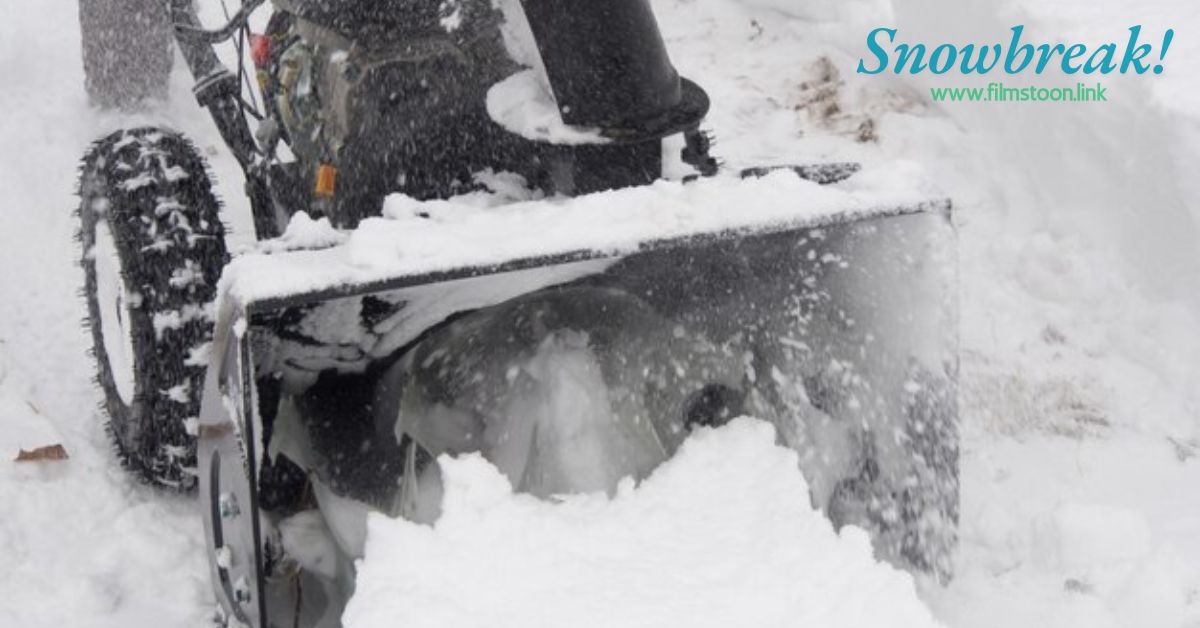When winter storms strike, power outages can leave you in the dark—literally. This is where Snowbreak Locate Uninterruptible Power Supply becomes essential. A UPS not only keeps your devices running but also safeguards against data loss and equipment damage. Knowing how to locate and utilize your UPS effectively can make all the difference when the weather turns nasty. In this step-by-step guide, we’ll explore everything you need to know about Snowbreak Locate Uninterruptible Power Supply systems, ensuring that you’re always prepared for whatever Mother Nature throws your way. Let’s dive in!
Step-by-Step Guide to Snowbreak Locate Uninterruptible Power Supply
The first step in locating your Uninterruptible Power Supply is to assess its importance during snowbreaks. Determine which devices are critical for operation and how long you need backup power.
Next, review the specifications of various UPS models to find one that meets your requirements. Familiarize yourself with features like battery life, capacity, and connectivity options. Armed with this knowledge, you can confidently select a UPS that will keep you powered up when it matters most.
Begining!
Snowbreaks can bring severe weather conditions that disrupt power supplies. During these events, having a reliable Uninterruptible Power Supply (UPS) becomes critical for maintaining essential operations and protecting electronic devices.
Understanding how to effectively locate and utilize UPS units during snowbreak situations is vital. This guide aims to provide an insightful step-by-step approach to ensure you are prepared when the storm hits. Efficient management of your power supply can make a significant difference in emergency readiness.
Understanding Uninterruptible Power Supply (UPS)
An Uninterruptible Power Supply (UPS) is a device that provides emergency power when the main source fails. It ensures that critical equipment continues operating smoothly during outages, preventing data loss and hardware damage.
UPS units can vary in size and capacity, from small desktop models to large systems for data centers. They typically use batteries or flywheels to store energy, allowing for seamless transitions between power sources. Understanding these basics helps in selecting the right UPS for specific needs.
The Role and Importance of UPS in Snowbreaks
Uninterruptible Power Supplies (UPS) play a critical role during snowbreaks, ensuring that essential systems remain operational. In extreme weather conditions, power outages can occur unexpectedly, disrupting communications and operations.
A reliable UPS provides backup power to vital equipment like servers and medical devices. This ensures continuity in services that could be life-saving or crucial for businesses. By maintaining functionality amid severe weather disruptions, UPS units protect against data loss and downtime while enhancing safety during challenging times.
Assessing the Need for UPS
Assessing the need for an Uninterruptible Power Supply (UPS) begins with evaluating your power requirements. Consider the critical equipment that needs protection during a snowbreak, such as servers, medical devices, or communication systems.
Next, analyze how often you experience power interruptions and their duration. If frequent outages disrupt operations or pose safety risks, investing in a UPS becomes essential to ensure continuous power supply and safeguard vital functions against disruptions caused by extreme weather conditions.
Key Features to Look for in a UPS
When selecting a UPS, focus on key features that enhance performance. Look for battery capacity, measured in VA or watts, ensuring it meets your power needs during outages.
Consider the type of output: pure sine wave models provide cleaner power for sensitive electronics. Also, check for additional ports and connectivity options like USB or network management capabilities to monitor usage remotely. These aspects significantly contribute to the efficiency and reliability of your uninterruptible power supply unit during critical times.
Selecting the Right Brand and Warranty
Choosing the right brand for your uninterruptible power supply (UPS) is crucial. Look for established manufacturers known for reliability and performance. Brands with positive customer reviews often signal quality products that can withstand snowbreak conditions.
Warranty options also matter significantly. Ensure the warranty covers critical components, such as batteries and electronics, for an extended period. A robust warranty reflects a company’s confidence in its product and provides peace of mind during potential outages or equipment failures.
Locating Uninterruptible Power Supply Units
Locating Uninterruptible Power Supply (UPS) units is crucial for maintaining power during snowbreaks. Start by identifying the most strategic locations, such as server rooms and critical infrastructure areas.
Ensure these sites are easily accessible and protected from harsh weather conditions. Consider placing UPS units in sheltered spots to minimize damage risks. Regularly reviewing these locations can help ensure that your backup systems remain functional when you need them most during adverse weather events.
Utilizing GPS or IoT Technology
Utilizing GPS and IoT technology can significantly enhance the effectiveness of locating Uninterruptible Power Supply (UPS) units during snowbreaks. With real-time tracking, you can pinpoint the exact location of your UPS systems, ensuring quick access when needed most.
Moreover, IoT devices allow for remote monitoring of power levels and operational status. This capability helps in anticipating potential failures or maintenance needs before severe weather hits. By integrating these technologies, you’ll improve response times and maintain essential operations seamlessly.
Ensuring Accessibility in Extreme Weather
Extreme weather can create challenges for accessing Uninterruptible Power Supply (UPS) units. It’s important to assess the accessibility of these locations ahead of time. Ensure that pathways are clear and well-maintained, especially in areas prone to snow or ice.
Implementing regular maintenance checks is essential. Keep equipment off elevated surfaces where heavy snowfall could obstruct access. Consider using signage to mark UPS locations clearly, making them easier to find even in adverse conditions.
Labeling and Mapping UPS Locations
Labeling and mapping your Uninterruptible Power Supply (UPS) locations is crucial for quick access during snowbreaks. Use clear, visible labels that indicate the UPS unit’s purpose or capacity. This will help anyone in the vicinity to identify them easily.
Creating a detailed map of all UPS units within your facility can streamline emergency response efforts. Include key landmarks and pathways to guide users effectively, ensuring everyone knows where to find essential power backups when needed most.
Troubleshooting Common UPS Issues During Snowbreaks
During snowbreaks, UPS systems may face challenges like battery failure or overload. Regularly checking battery health and ensuring proper charging can prevent unexpected shutdowns.
Another common issue is connectivity loss due to severe weather. Ensure all connections are secure and consider backup communication methods. If problems persist, consult the manufacturer’s troubleshooting guide for specific solutions tailored to your model, helping maintain a reliable power supply when you need it most.
Additional Considerations for UPS in Snowbreaks
When dealing with Snowbreaks, consider the battery life and maintenance of your Uninterruptible Power Supply. Regularly check battery health to ensure optimal performance during outages.
It’s also wise to evaluate the load capacity of your UPS. Ensure it can handle all critical devices that need power during a snowstorm. Investing in surge protection is essential too; it safeguards equipment from voltage spikes often caused by extreme weather conditions.
Conclusion and Final Considerations
When dealing with snowbreaks, ensuring your uninterruptible power supply (UPS) is properly located and maintained is crucial. A reliable UPS can provide the backup power needed during severe weather conditions. By understanding your specific needs, assessing key features, and leveraging technology to locate units easily, you can enhance resilience against power interruptions.
It’s also important to label and map these locations for quick access when emergencies arise. Regular maintenance checks will help prevent common issues that could disrupt service during critical moments. Prioritizing these elements ensures not only preparedness but also peace of mind in unpredictable weather scenarios.
Click here for more articles on our site!







